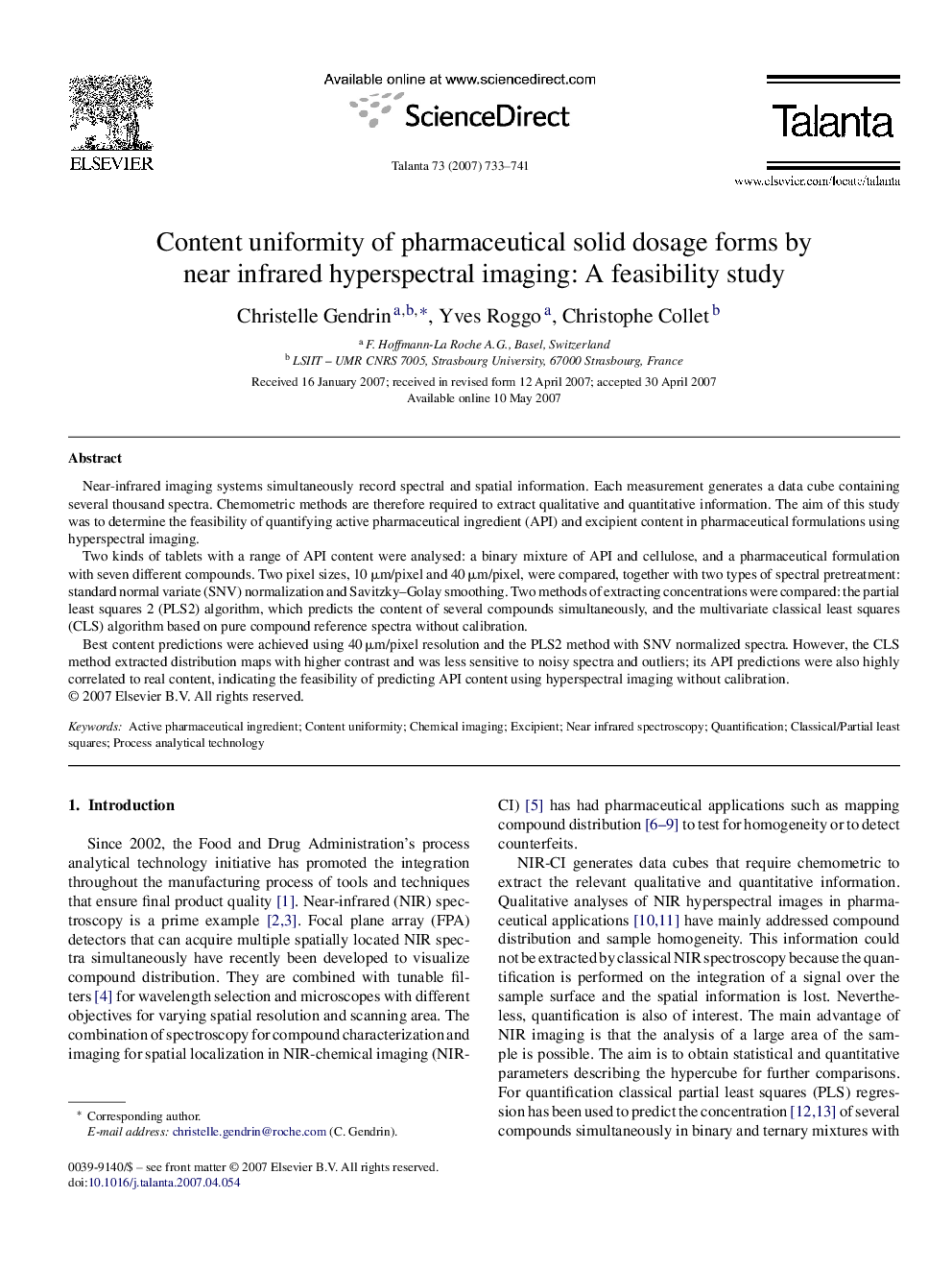| Article ID | Journal | Published Year | Pages | File Type |
|---|---|---|---|---|
| 1247185 | Talanta | 2007 | 9 Pages |
Near-infrared imaging systems simultaneously record spectral and spatial information. Each measurement generates a data cube containing several thousand spectra. Chemometric methods are therefore required to extract qualitative and quantitative information. The aim of this study was to determine the feasibility of quantifying active pharmaceutical ingredient (API) and excipient content in pharmaceutical formulations using hyperspectral imaging.Two kinds of tablets with a range of API content were analysed: a binary mixture of API and cellulose, and a pharmaceutical formulation with seven different compounds. Two pixel sizes, 10 μm/pixel and 40 μm/pixel, were compared, together with two types of spectral pretreatment: standard normal variate (SNV) normalization and Savitzky–Golay smoothing. Two methods of extracting concentrations were compared: the partial least squares 2 (PLS2) algorithm, which predicts the content of several compounds simultaneously, and the multivariate classical least squares (CLS) algorithm based on pure compound reference spectra without calibration.Best content predictions were achieved using 40 μm/pixel resolution and the PLS2 method with SNV normalized spectra. However, the CLS method extracted distribution maps with higher contrast and was less sensitive to noisy spectra and outliers; its API predictions were also highly correlated to real content, indicating the feasibility of predicting API content using hyperspectral imaging without calibration.
